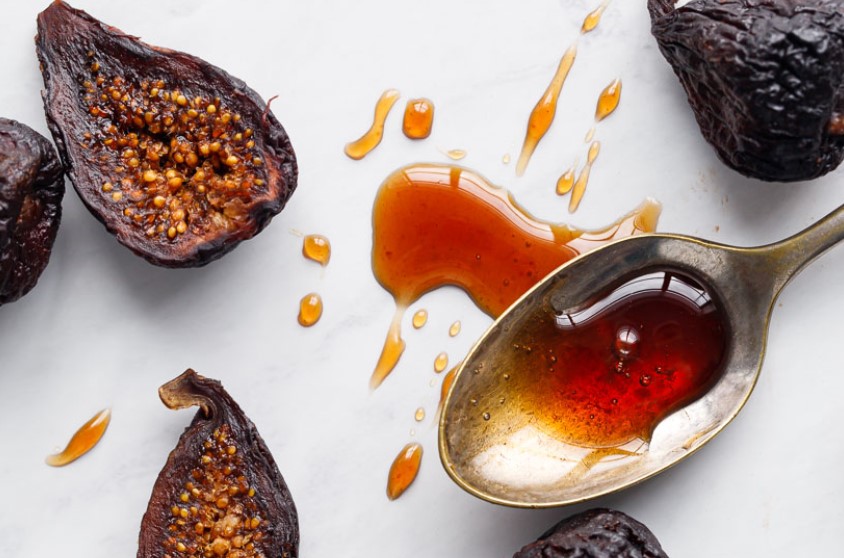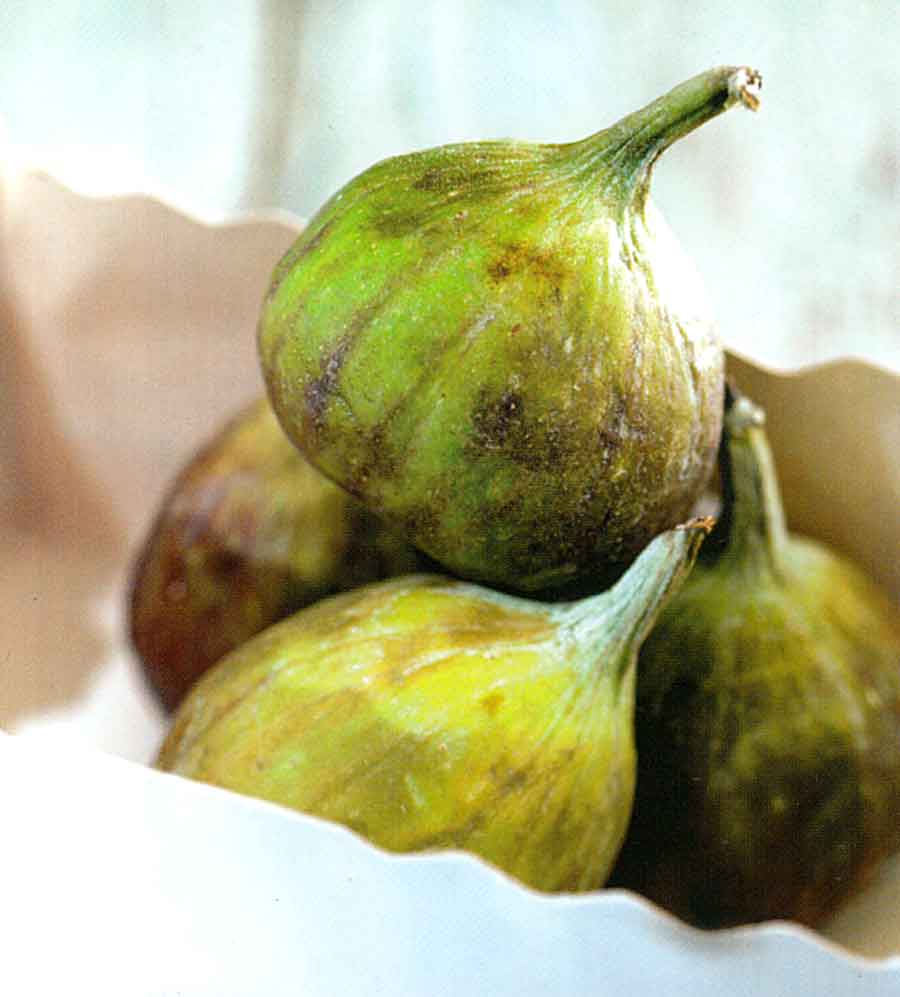Common figs grow on the ficus tree (ficus carica), which is a member of the mulberry family. Fig was one of the first fruits cultivated by ancient people. It is originally from Asia Minor, Anatolian region of Turkey. When it was taken to Greece and other Mediterranean countries, became a widely used fresh and dried fruit. It became so common that people started to call it the “poor man’s food”.
The fig tree was imported to the United States sometime during the 16th century, and it grows well in the South Atlantic and Gulf Coast areas. Figs, are among the most ancient fruits in the history of humankind, with origins from Turkey to Northern India. Figs may be used as a natural way to satisfy the craving for sweets and even as a substitute for fat in cake recipes.
In this article you will find..
- How to choose figs
- Benefits of figs
- How to store figs
- How to eat figs
- How to ripen figs
- Recipes to use figs in
How to Choose Figs
When choosing fresh figs feel them in your hands. They should be soft and yielding, but not squashy. There should be no bruises and blemishes on the skin.

Fresh figs are soft and yielding, but not squashy.
Benefits of Figs
Figs have laxative properties and help eliminate toxins and restore vitality. They are recommended for a number of problems.
Cleansing fig water recipe
To sooth bronchitis a few times a day, drink fig water – a great expectorant.
- Chop 24 dried figs
- Soak them in 2 liters of filtered water at least overnight
- Drain this water and drink one glass first thing in the morning and then all through the day.
Home-made fig and prune syrup
To alleviate constipation try this very sweet syrup.

- First, soak about 1 cup dried figs and 2 cup prunes in 2 cup water for at least 15 hours
- Blend it in a food processor
- Add 10 teaspoon organic (or any other extra quality) pure honey
- Keep it in a hermetic jar
- Drink before each meal and before bed
Dried fruit puree recipe
Or make this powerful and delicious Fruit Puree (double enjoyment)
You will need
- 4 dried figs
- 5 dried prunes
- 5 naturally dried apricots (brownish color)
- 6 dried yellow plums
- 1 fresh green apple
- 2 cups water.

- Place all the fruit in a suitable pot and boil them in 2 cups of water
- After bringing to boil, reduce the heat to medium
- Cook uncovered till the water is fully evaporated
- Cool completely
- Puree in the blender or food processor
Enjoy this delicious and very helpful puree mixed with a pot of low fat homemade yogurt, and tell me what happens tomorrow morning! You’ll enjoy it twice! Don’t forget to drink plenty of water on the way.
How to Store Figs
If your figs are ripe you need to keep them in fridge. You may keep them in a plastic bag placed in a fridge for up to 2 days. You can also store fresh figs in the freezer. They can be frozen whole, sliced, or peeled in a sealed container for ten to twelve months. Simply defrost prior to using and take extra care when handling these super delicate fruits
How to Eat Figs
Fresh figs are best eaten in season, without peeling them. The dried figs are great to take everywhere as a snack. Fresh figs are delicious served on their own, but they have an affinity with nuts such as walnuts, pistachios and almonds. They can be served raw as a first course with Parma ham or salami, or with Greek yogurt and honey or stuffed with raspberry coulis or mascarpone and served as a dessert. Poached in a little water or wine flavored with cinnamon or nutmeg, they make an excellent accompaniment to duck, game or lamb.
How to Ripen Figs
Ripe figs are extremely delicate and do not travel well, so it is hard to find imported fruit at a perfect stage of maturity, but they can be ripened at home, by storing them on a high shelf.
There are few fruits more delicious than ripe figs, but treat them with care, as they bruise very easily.
Recipes to Use Figs in
Tips and Notes
In season throughout the Mediterranean, you can find delectable local figs that are just ripe for eating. Beware of the blemishes when shopping for figs.
Nutrients and Calories
Figs are considered among the highest plant sources of calcium and are high in phosphorus, potassium, vitamin C and beta-carotene.
Best sources of potassium include figs along with apricots, bananas, potatoes, raisins, garlic, legumes and squash.
Figs are also a great source of fiber and full of vitamins and minerals and they are delicious served on their own
Per 100 g of raw, fresh figs:
Calories: 74 kcal
Carbs: 19g
Protein: 0.7g
Fat: 0.3g
Fiber: 3g
Potassium: 232mg
Manganese: 0.1mg
Vitamin K: 4.7mcg
Vitamin B6: 0.1mg
Magnesium: 17mg
Calcium: 35mg
Thiamine: 0.1mg
Vitamin A: 142IU
Vitamin C: 2mg

